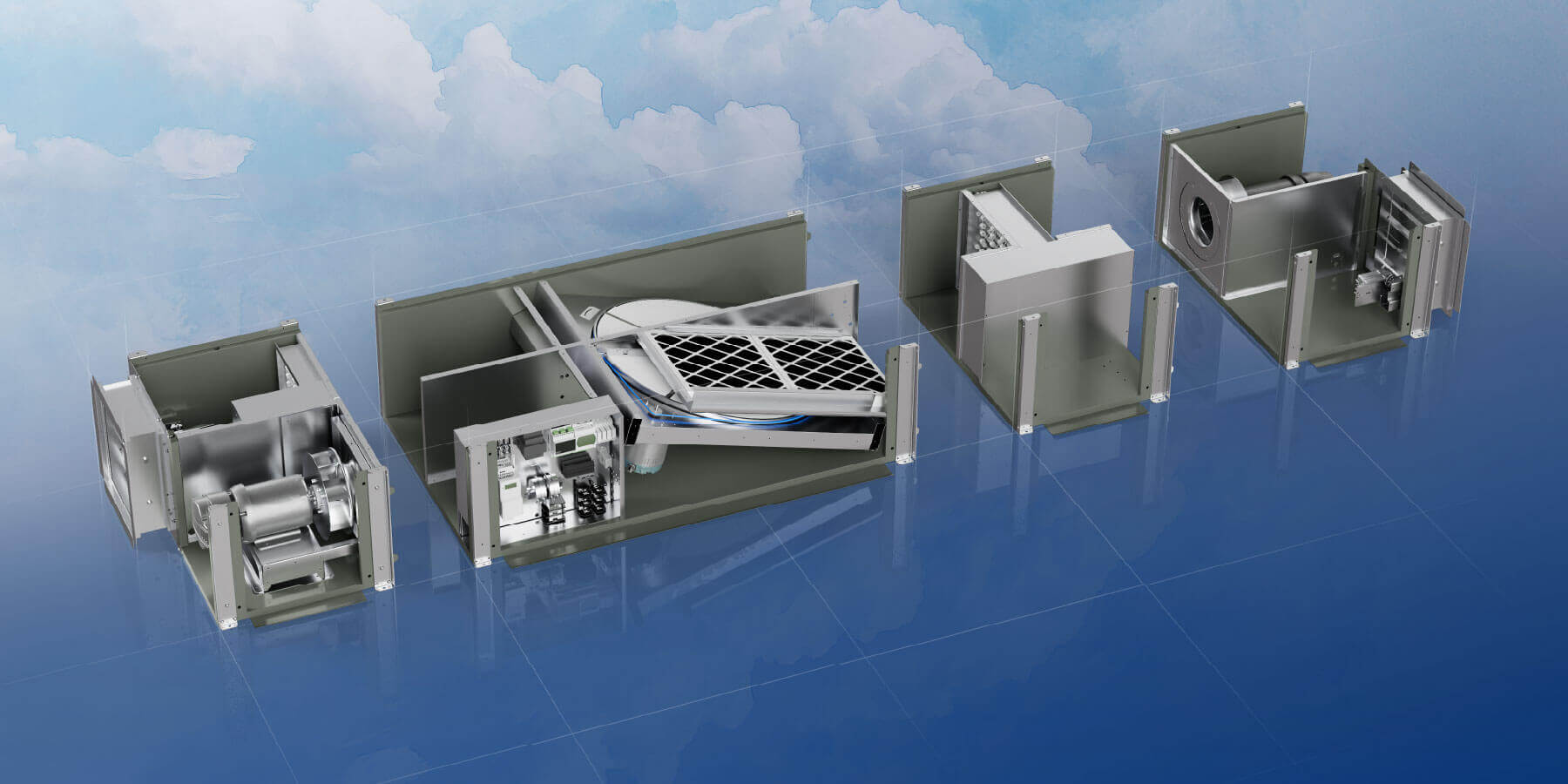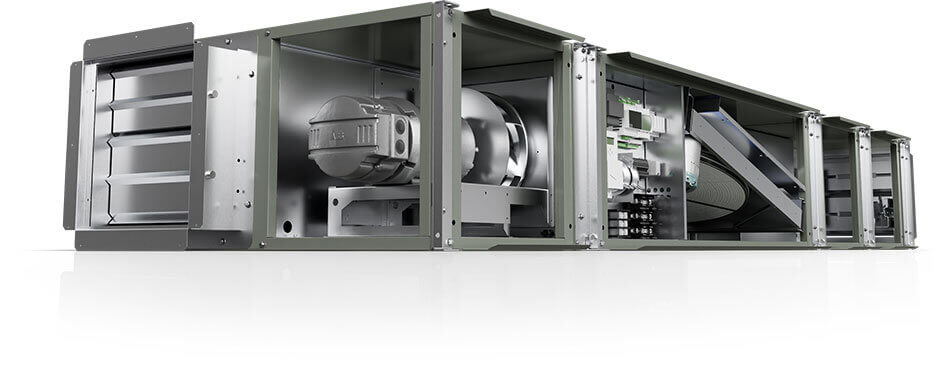
Applications where a commercial building needs a high amount of ventilation are increasingly common. They include hospitals, schools, and some office buildings. A high indoor air quality (IAQ), which decreases health risks and increases occupant comfort, strongly correlates to high ventilation. That’s why building codes and green energy initiatives often have strict requirements for ventilation in CFM per square foot or per person. Fortunately, the energy recovery technologies that can be incorporated with a 100% outdoor air unit save operating costs over time.
If you need 100% outdoor air for a building project, you have some big choices to make. A Dedicated Outdoor Air System (DOAS) or an energy recovery ventilator (ERV)? Rooftop or indoor installation? Tempering or non-tempering? This post breaks down some common options and their pros and cons.
What is a DOAS?
A DOAS unit is designed to focus on ventilation and dehumidification at very high efficiency. It decouples ventilation loads from less efficient equipment. Though other equipment may be paired with a DOAS to provide air tempering, a DOAS can also deliver heating and cooling. It can also include energy recovery. Because of its size and large airflow capacity, it is typically installed on rooftops.
A DOAS is an excellent option for efficiently meeting outdoor air requirements. In some cases, however, a building owner may be looking for a unit with a smaller footprint or a lower initial cost to meet those requirements. If that’s the case, an energy recovery ventilator is a good alternative.
What is an Energy Recovery Ventilator?
An ERV ventilates while recovering both sensible (temperature) and latent (moisture) energy from the return airstream and using it to pretreat the supply airstream for energy savings. It accomplishes this using an exhaust and supply blower as well as either a total enthalpy wheel or core. The enthalpy wheel spins between the supply and return airstream to transfer energy, while the enthalpy core is a static device that accomplishes the same function. An ERV typically has a lower initial cost than a DOAS, but also a lower airflow capacity.
In this post, we will focus on indoor ERVs. These ventilators are highly configurable, with end or side discharges and the ability to access ducts through either the right or left side. They also have modular construction that allows them to be carried in pieces through doorways and assembled onsite. Also, they provide the required efficiency to meet Very High Efficiency (VHE) stretch code initiatives and assist with decarbonization projects.
Choosing an Energy Recovery Ventilator
There are three main scenarios where an indoor ERV would be preferable to a roof-mounted ERV:
- Roof constraints. Some buildings have a pitched or sloped roof, and while this is helpful for withstanding snow and rain, it makes it challenging or impossible to add a unit on the rooftop. A solution is modular assembly of an indoor ERV in a basement, mechanical room, attic, or mezzanine.
- High-rise buildings such as hotels. These buildings are tall and need a lot of ventilation. Enough ERVs to ventilate a high-rise building might be a difficult fit on the roof. A better alternative is to add indoor ERVs to mechanical rooms or ceiling spaces on different floors.
- Retrofit. Energy recovery can be added to an HVAC system that was not originally designed for it. Ductwork space may be limited, so a flexible indoor installation would be the easiest option. (Rooftop ERVs can also work well in retrofits, depending on the situation.)
If you choose an indoor ERV in one of these scenarios or for another reason, the next decision will be whether to temper the outdoor air or not. This will lead to one of three options.
a) ERV with tempering: Air coming through an ERV needs to be made space-neutral with the indoor air in terms of temperature and humidity, which typically refers to a temperature of 70° F. Added tempering options can assist with this. An indoor ERV that provides tempering can also be referred to as an indoor ventilator with energy recovery.
b) ERV without tempering: In mild and dry climates such as those found in the western United States, or in applications where another unit is providing heating or cooling, an ERV can ventilate directly to the space without tempering.
c) Pairing ERVs with RTUs: An optimized rooftop unit (RTU) can provide dehumidification as well as cooling and heating, and also modulate its energy usage for increased efficiency. ERVs can be combined with RTUs to deliver ventilation as well as the operating savings that come with energy recovery.
Summary
- If an application calls for having one unit that can provide 100% outdoor air ventilation and dehumidification, with or without energy recovery, heating, and cooling, and if rooftop space is not an issue, a DOAS is a great choice.
- In applications with space constraints or lower airflow requirements where 100% outdoor air and energy recovery are still needed, an ERV is an excellent alternative.
- Indoor ERVs have modular construction that can be installed in a basement, mezzanine, or mechanical room, and have flexible configurations for discharge and duct access.
- ERVs can provide space-neutral ventilation, provide non-tempered ventilation for applications such as mild and dry climates, or be paired with an RTU for ventilation plus heating, cooling, and dehumidification.
 |
| Indoor Ventilator with Energy Recovery Wheel |
Learn More
Greenheck offers DOAS units as well as energy recovery ventilators for both rooftop and indoor ceiling-mounted installations, with and without tempering. Your local Greenheck representative can discuss the many options available. More information on these products is available here:
DOAS Energy Recovery Rooftop Units


from